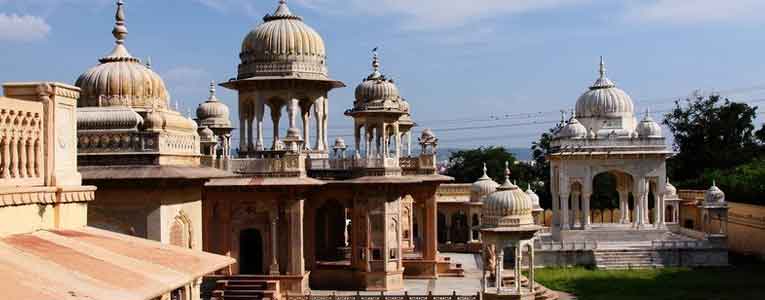


Gaitore, the royal cremation ground of the Kachhwaha Rajputs, was chosen as the designated place by Maharaja Sawai Jai Singh II, the founder of Jaipur, after he shifted the capital to the city. From 1733, the cremation of every Kachhwaha king was done here. The only cenotaph which is missing from here is the one of Maharaja Sawai Ishwari Singh whose cremation was done in the city palace complex in Jaipur.
The cenotaphs of Gaitore symbolise the perfect blending of Islamic architecture and Hindu temple architecture. These are open domed pavilions which are built on a raised platform. Among the various cenotaphs dedicated to Sawai Ram Singh, Sawai Madho Singh and Maharaja Sawai Jai Singh II, the one which is dedicated to Maharaja Sawai Jai Singh II stands out. This cenotaph, made of pure white marble, is decorated with stunning peacock deigns and patterns. The carvings in each cenotaph reflect the style and taste of the specific king and the culture which was prevalent in his time. Traces of paintings which once decorated the walls of the cenotaphs can still be seen.
Gaitore is located on the Jaipur-Amer road at a distance of 15 km from the Pink City. You can hire autos, taxis or local buses from the city itself to enjoy the spectacular view.
Gaitore in Jaipur remains open from 9:00 Am to 5:00 Pm, on all seven days of the week. Generally, one can see the whole of Gaitore in 1 hours time.
The best time to visit Royal Gaitor is during the death anniversary of Maharaja Sawai Jai Singh II in September. Garh Ganesh and Nahar Ke Ganesh Temples are located nearby and can be visited.